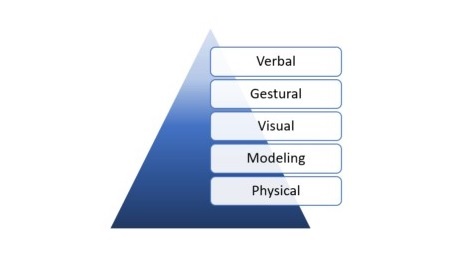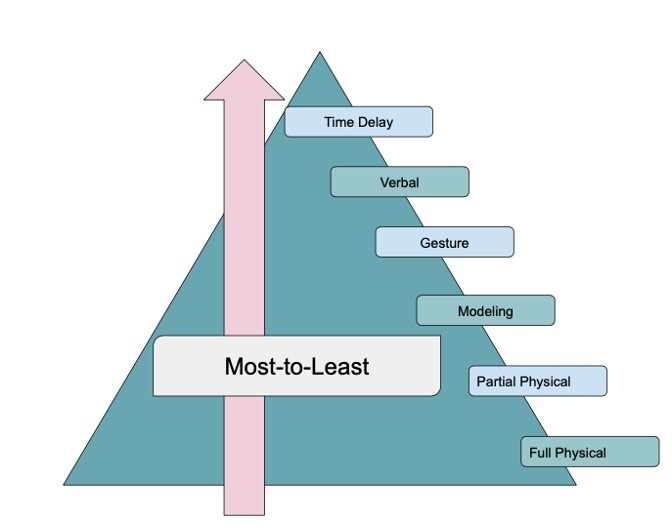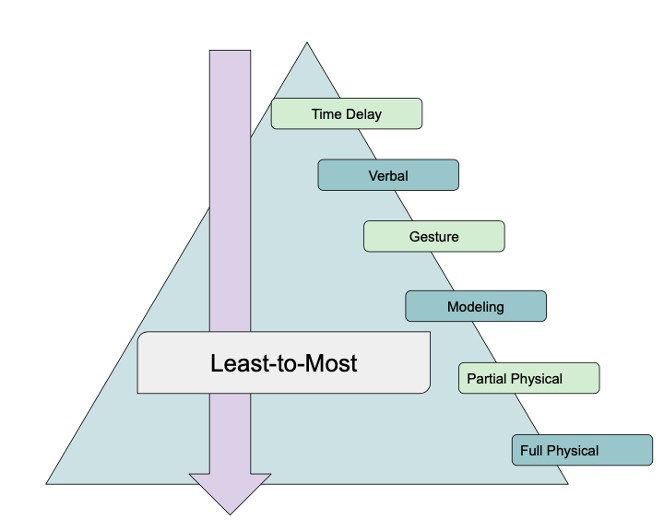
Applied Behaviour Analysis (ABA) is a scientific approach used to study and modify human behavior. It has proven effective in a wide range of areas, such as education, therapy, and organizational management. A key component of ABA is the use of prompts, which are cues or hints provided to an individual to assist them in acquiring new skills or performing desired behaviors. The prompting hierarchy is a systematic framework that outlines the progression of prompts used in ABA interventions. This article aims to provide a comprehensive understanding of the prompt hierarchy in Applied Behaviour Analysis.
What Is Prompt Hierarchy?
The prompt hierarchy refers to a step-by-step approach that allows ABA practitioners to provide the necessary support to individuals as they learn new skills. It is designed to promote independence and fade out prompts gradually, ensuring that the individual becomes proficient in performing the targeted behavior without assistance. The prompt hierarchy encompasses a range of prompts, from highly intrusive to least intrusive, based on the learner's needs and abilities.
Types of Prompts

Here are the several types of prompts that can be used by teachers based on the abilities and levels of the learners:
This is the most intrusive type of prompt, involving physical guidance to help the individual perform the desired behavior. It may include physically guiding the learner's hand or body through the required motions.
This type of prompt involves the use of nonverbal cues, such as pointing, nodding, or eye gaze, to guide the individual's behavior. Gestural prompts are less intrusive than physical prompts but still provide direct guidance.
A model prompt involves demonstrating the desired behavior for the learner. The model may be performed by the therapist, a peer, or through video representation. This visual guidance helps the individual understand the expected behavior.
Verbal prompts consist of spoken or written instructions to guide the learner's behavior. These prompts can range from explicit instructions to partial cues, providing varying levels of assistance.
Visual prompts involve the use of visual aids, such as pictures, symbols, or written cues, to support the individual's understanding and performance of the desired behavior.
Positional prompts involve manipulating the environment or the position of objects to facilitate the desired behavior. For example, place a desired object closer to the individual to encourage reaching or manipulating the environment to prompt appropriate actions.
Fading prompts involve systematically reducing the level of assistance provided as the learner becomes more proficient in the targeted behavior. It is an essential aspect of the prompt hierarchy as it promotes independence and generalization of skills.
Application of the Prompt Hierarchy
When implementing the prompt hierarchy, ABA practitioners follow a systematic approach. They start with the most intrusive prompts and gradually fade them out as the individual demonstrates increased proficiency. The prompt hierarchy ensures that learners are provided with the necessary support while minimizing reliance on prompts, ultimately leading to independent behavior.
You should use most-to-least prompting for learners:

You should use least-to-most prompting for learners:

The specific prompt level chosen depends on the individual's current skill level, learning style, and the complexity of the behavior being taught. ABA practitioners carefully assess the individual's responses and adjust the prompts accordingly to ensure effective skill acquisition.
Why Use Prompts?
The prompt hierarchy in ABA offers several benefits and you should use this because:
When students are given to complete a task on their own, they often stick to doing it in one particular way, unless they are shown better solutions. Thus, prompting children with special needs allows them to learn the best way to accomplish their objectives. If you are teaching basic skills to students such as dressing, hand washing, etc then this approach can be extremely helpful.
Children with special needs think differently from other people. Hence, by changing the prompts and increasing the level of prompting you can adapt to what your learners will understand. The prompt hierarchy involves a variety of cues and allows teachers to think of other ways to meet a variety of learning needs. With an arsenal of ideas, you can communicate better with less frustration.
It provides a structured framework for teaching new skills, allowing for consistency and efficient skill acquisition. By systematically fading prompts, it promotes independence and generalization, enabling individuals to apply learned behaviors across different settings and contexts. Moreover, the prompt hierarchy allows for individualized interventions, as prompts can be tailored to each learner's specific needs.
Put Prompt Hierarchy Into Practice
While traditional prompt hierarchy offers a general overview, it often fails t depict fluidity. Thus, it is important to consider individual differences when using the prompt hierarchy. Each learner has unique characteristics, strengths, and challenges, requiring flexibility in prompt selection and implementation that should be kept in mind while creating a program. Additionally, you can enroll yourself in Online Special Education Courses to learn about the various strategies that move along the prompting strategies.
Find the right course for you and try out the course. Call us at 1800–212–6400. You can also mail us at act@asiancollegeofteachers.com
Get In Touch
UK – Registered OfficeAsian College Of Teachers Ltd (UK)
27, Old Gloucester Street, London – WC1N 3AX, UK
UK Toll Free: 0-808-189-1203
www.asiancollegeofteachers.co.uk
All SEN Courses are designed, developed and created by Asian College of Teachers Ltd, United Kingdom. These courses are certified by CPD Certification Service UK and endorsed by NCC Education, UK, and Short Courses from CACHE, UK through Laser Learning UK.
Asian College of Teachers (ACT) undertakes a continuous review of its teacher training courses to ensure imparting high quality education. However, there might be circumstances outside of ACT’s control which might affect its stakeholders like if you are planning to teach in a different country, applying for a teaching license, pursuing higher studies or trying to get the certificate approved by the Ministry of Education (MoE) of a particular country then you can do so with the certificate issued by Asian College of Teachers (ACT). However, each country’s Ministry of Education (MoE) or educational bodies set certain standards that are indispensable for the pursuit of higher studies or teaching in schools in that country. So it can be a possibility that you may be able to use the certificate for higher studies or teaching purposes in one country and not in another. Therefore, we strongly recommend that you investigate thoroughly and check with the relevant authorities regarding the acceptance of the certificate issued by us before you enrol on a particular course. ACT strives to offer high-quality education and its certificates can be valuable for various purposes internationally, but still it is crucial for individuals to verify the specific recognition of the certificate in the country they intend to use it, especially for formal education or professional licensing purposes. This approach ensures that the stakeholders make informed decisions regarding their educational and career paths.
© 2025 Asian College of Teachers. All Rights Reserved. Asian College Of Teachers is a trading brand of TTA Training Pvt. Ltd (India) - CIN U80902WB2016PTC215839, Asia Teachers Training Co., Ltd (Thailand) - Registration No. 0105558193360, Asian College Of Teachers Ltd (UK) - Company Number 9939942 & Asian College Of Teachers LLC, (USA) - Federal Tax Identification Number 30-1261596
Designed by kreativewebtech